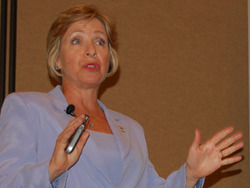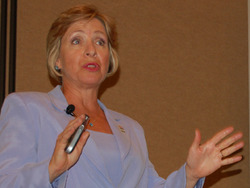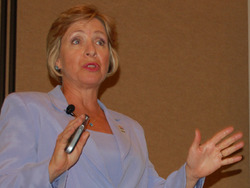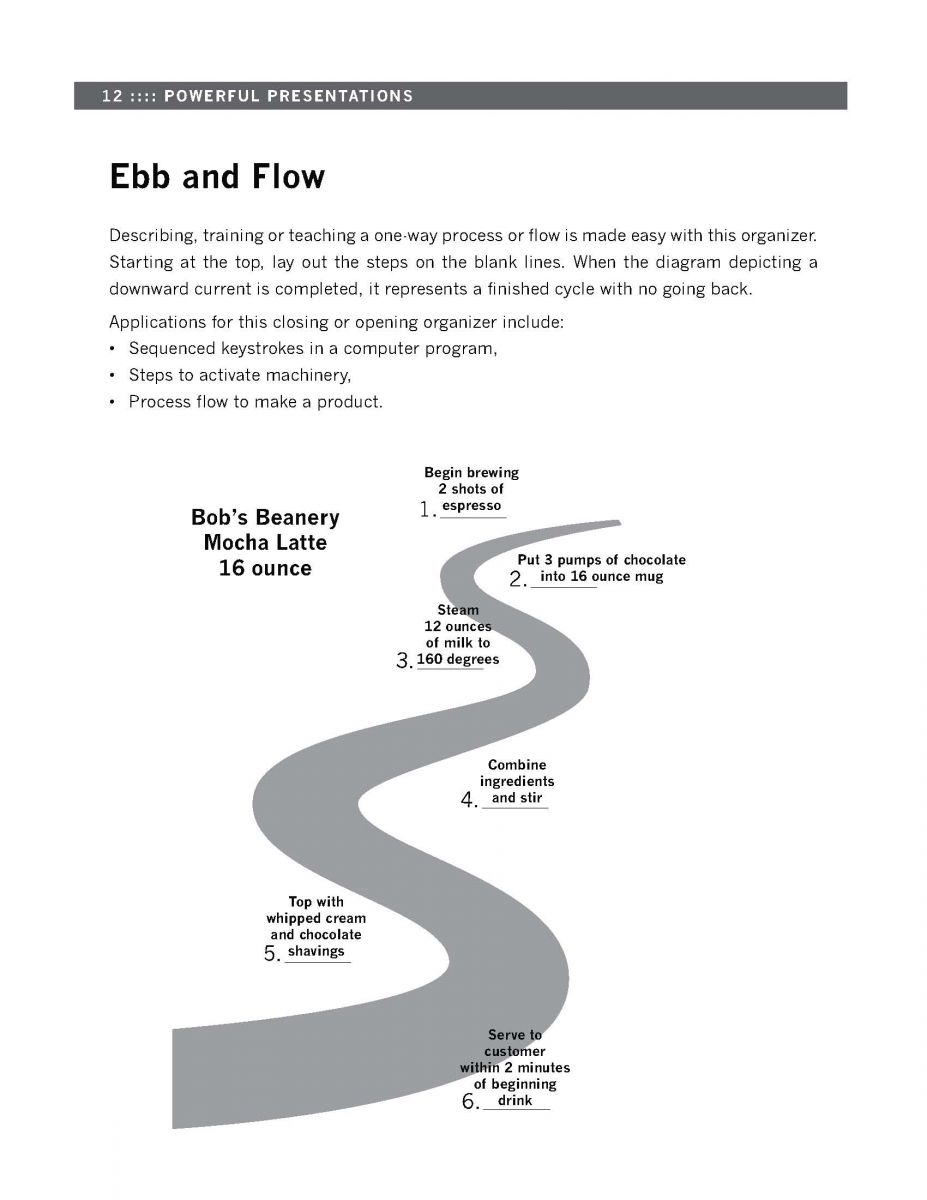


In this last of three articles designed to compel you to start putting the point back in PowerPoint, compare your top four strategies with mine. Here you will discover my next four pointers and why you need an Xtreme PowerPoint Makeover.
STOP using PowerPoint as a delivery mechanism! It is a support media for your message.
Before my next four ideas, let’s see if you can fill in the blanks at random from my first two in this series:
11. Don’t “_ _ _” read the slides.
9. _ _ _ _ _ _ _ _ and graphic on every slide.
7. _ _ _ _ _ _ _ the extraneous.
6. It’s not about _ _ _, it’s about _ _ _ _.
Having trouble? Click here for part one or here for part two of Putting the Point Back in PowerPoint.
Now my top four ideas…
4. Less than 10% slides with verbal elaboration.
At The Bob Pike Group (BPG), as we design presentations, we limit our slide decks to one headline and supporting graphic only (see articles one and two). Verbally, we solicit feedback and input from the learners in the room while sharing our expertise. We do not put the entire message on slides (if you do this, is the slide for them or a cheat sheet for you? Be honest).
If it is “behavior” you want to change, delivering your message exclusively with PowerPoint is content out of context, the hardest way for adults to learn. At BPG, we also intersperse the use of poster paper, white boards, cards, tape flags, and interactive learning activities to create experiences with behavior outcomes as our goal. Since very little learning happens in the “delivery” of content like PowerPoint and lecture—it occurs in the processing of content—trim the number of slides to the Need to Know. Set a goal for yourself, only use PowerPoint one-fourth of the time (or less). Your next audience will sing your praises and change more behavior as a result.
3. Consider a takeaway handout with notes.
Compose a meaningful handout that goes beyond your slides. Make it a takeaway, not a throwaway. Allow for note taking and capturing your key message and as much of your verbal elaboration as pertains to them. Use the power of a Graphic Organizer (see below) to speed retention and transfer of knowledge. Duplicating your slide as your handout is redundant. If you have 10 points on a topic, ask the learner to capture all 10 in bubbles or fill-in-the-blanks on one page. Now I have the whole picture on one page rather than having to toggle from page to page trying to tie things together.

2. What is your point A to point B?
Begin with your behavioral outcome in mind. If it is persuasion you have in mind when they join your point of view, what do you want them to do differently? What do you want them to Know, Feel or Do differently after this session that they didn’t Know, Feel or Do before the session? That performance or outcome objective probably falls into one of these categories: Make A with B, Choose A given B, or Do step A to achieve B. You might also have more of a secondary objective that is knowledge-centered or cognitive in nature or feeling or belief-centered, any of which supports your desired behavior change. Decide it before you design it! Otherwise you are not being participant-centered; you are being content-centered.
1. Get feedback!
When you are content or slide-centered, clicking to beat all clicking records, talking until hoarse, very little learning is occurring. It is not until we stop and allow our attendees to process what they are learning, share what they know and brag to others about the meaning they are making that learning is anchored. Guess what? If they don’t remember it, they can’t apply it, share it, or duplicate it.
See my upcoming article which will give you lots of feedback-rich ideas next month, “Interactive PowerPoint: 13 Strategies When You Can’t Change Your Slide Show.”
For article one of "Purposeful PowerPoint® Pointers," click here!
For article two of "Purposeful PowerPoint® Pointers," click here!
Submit your creative training ideas to us and perhaps see your name in print! We’re looking for creative five-minute openers or energizers. Submit your idea to ezineeditor@bobpikegroup.com and keep reading The Bob Pike Group ezine.
This article was re-uploaded from our internal archive.
Don't miss out on updates and chances
to sharpen your skills with participant-centered learning.




3740 N Chestnut St #113 - Chaska, MN 55318-3053